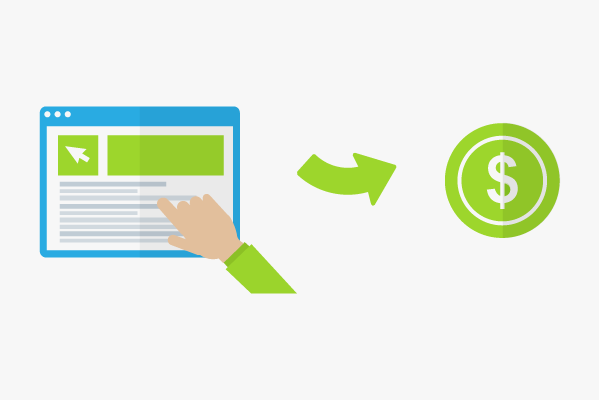Cost Per Click
Cost per click (CPC) also called pay per click (PPC) is a payment method in online marketing. The advertiser pays per click for advertisement booked, such as a text link, a banner or a video. In contrast, many publishers receive their commissions on the basis of the CPC. Advertising networks such as Google AdWords and Google AdSense calculate the costs for their customers or publishers' revenues mainly on the principle of cost per click. Cost-per-Mille (CPM) is an alternative billing method for advert displays.
Background
In order to adequately recompense or pay for an advertising service on the Internet, advertisers such as web publishers need a digitally measurable quantity. The click as a unit has proven itself many times, although there are always cases of click fraud. Tracking clicks on websites, as well as the source of origin is very easy to set up with web analytics tools like Google Analytics. Clicks can also be easily tracked on AdServer.
Examples
A famous example for CPC is Google AdWords, where advertisers bid on advertising space in Google's search engine result pages. By bidding on specific keywords while setting a maximum bid, advertisers have high control over their CPC. A higher bid often leads to a higher CPC, but also to higher positions and therefore higher CTR. Advertisers often lower their bid intentionally and optimize their ads to decrease CPCs while still having a high CTR.
Costs
The cost of a click can range from a few cents up to double-digit amounts. The CPC is dependent upon many factors. The following aspects determine the CPC for advertisers:
- Quality of the site on which the advertisement appears: portals with wide coverage usually have a higher CPC than small websites.
- Type of advertising medium used: banner clicks usually cost more than clicks on text links.
- Positioning of the ad on the website: the CPC for ad placements on sub-pages is usually less than the cost per click on the home page.
- In the auction procedure, as with Google AdWords, the number of competitors and the level of their bids affect the CPC.
- The sector for which is being advertised: the CPC is usually higher in more competitive industries, such as the financial sector.
- Amount of the booked advertising: companies can reduce the CPC by booking large volumes of ads in advertising networks.
For publishers, the CPC depends on the following factors (for example when participating in Google AdSense):
- Quality of your website,
- Click through rate on your website,
- Coverage of your platform,
- Relevance of your website to the offered promotional materials.
Thus, the CPC can be determined both by web publishers and advertisers.
Pros and Cons of CPC
CPC can be easily determined using log file analysis, whereby the billing method can be used for each website. Moreover, the CPC provides a solid scalable quantity in the calculation of advertising budgets, charging advertising customers for the exact number of times their ad was actually perceived by users. That distinguishes the CPC fundamentally from CPM as a payment method.
A disadvantage of the CPC method is that clicks can be generated very easily and advertisers can be swindled. At the same time, you can also be charged for CPC when a user clicks repeatedly on the same ad within an advertising network or a shopping search engine (such as Google shopping). In this case, costs are no longer controllable and advertising budgets are quickly depleted.
Significance for Web Analysis
The click costs are a simple parameter that can be used to calculate the ROI. It is not only the price for the individual click that is relevant here, but also the price for the individual click that an advertiser has paid. The click costs are related to the revenues. Ultimately, every company has to ask itself how much it is willing to pay for a conversion and then how much it wants to spend on a click.
Within the framework of the web analysis, attention should therefore be paid on the one hand to whether there are unforeseen increases and thus costs when clicking on advertising material and, on the other hand, whether these costs are covered with additional income.

